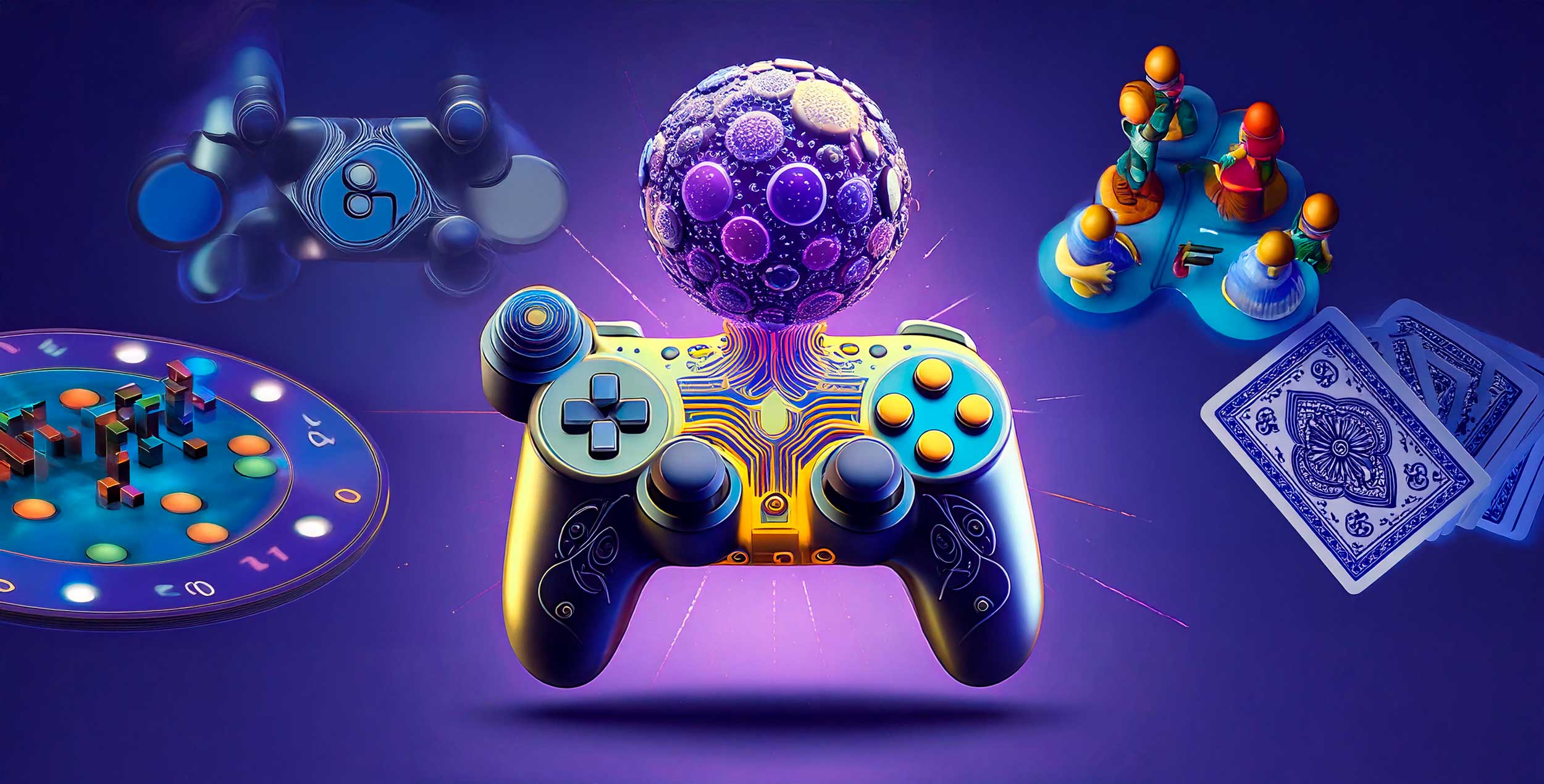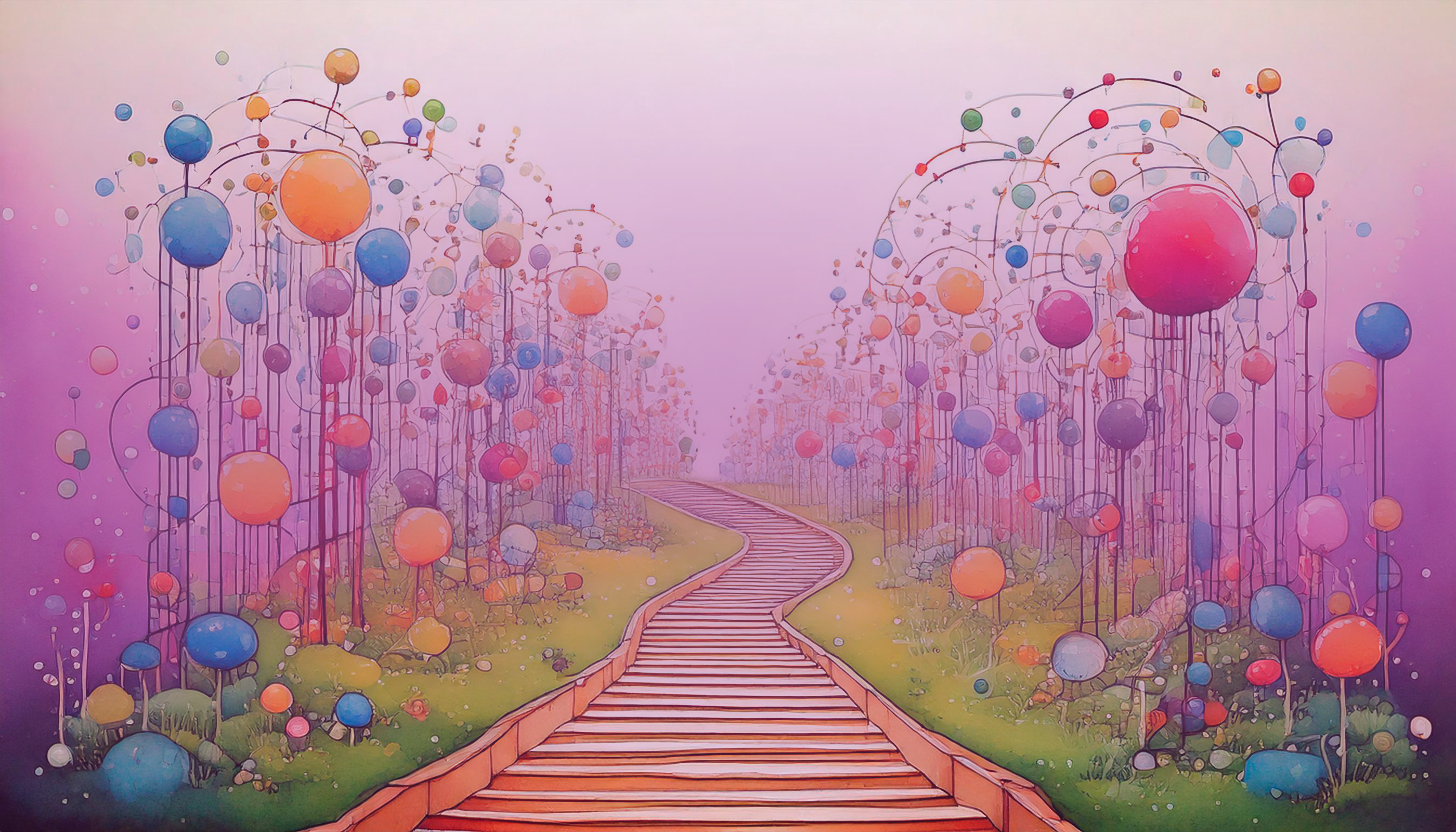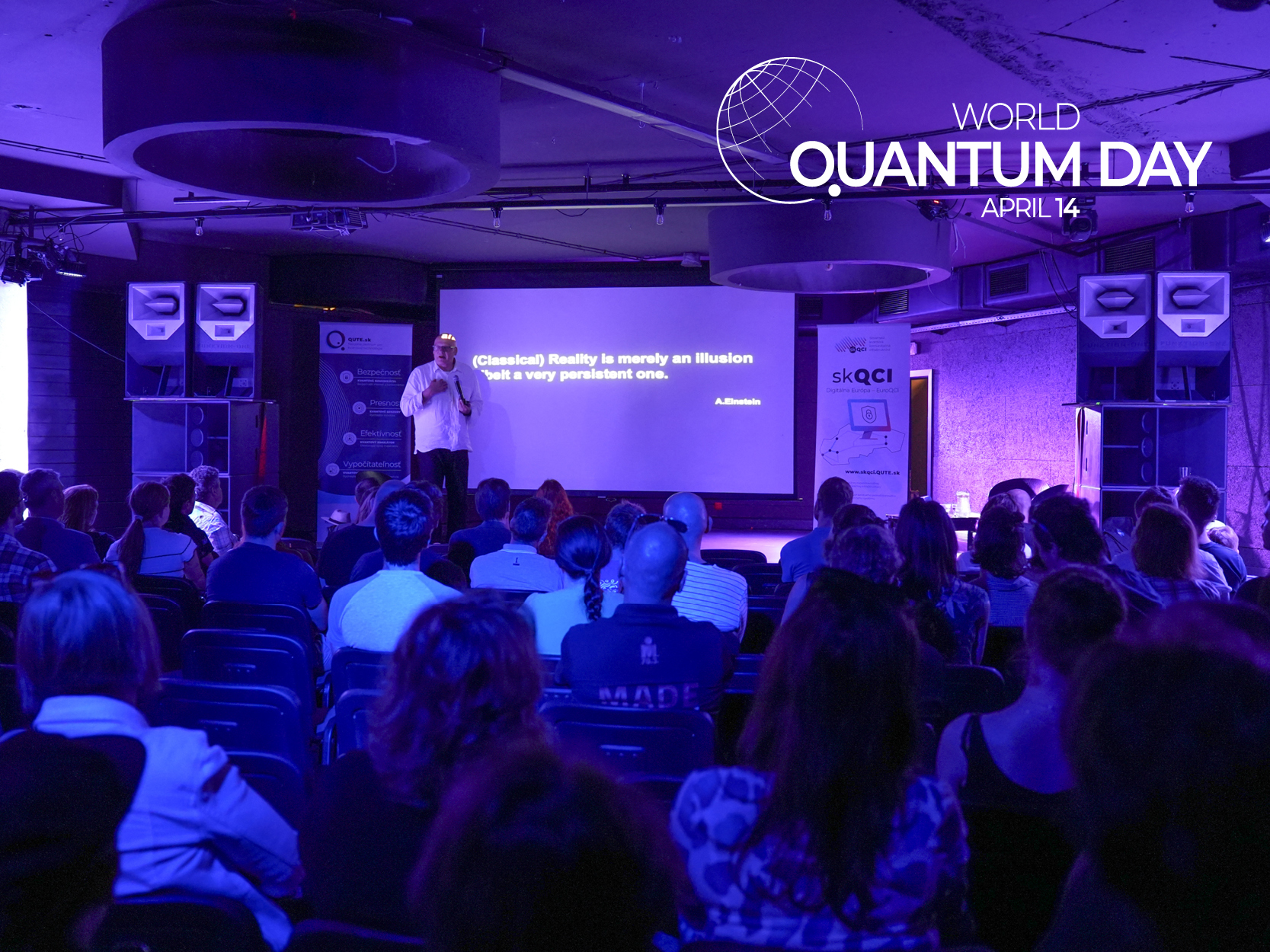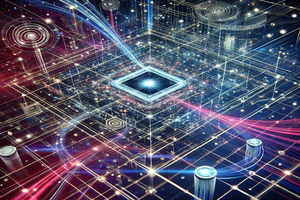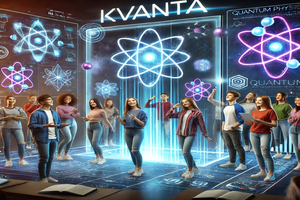: 2025
: 2024
: 2023
: 2022
: 2021
: 2020
: 2019
: 2018
: 2017
: 2016
: 2015
: 2014
: 2013
: 2012
: 2011
: 2010
: 2009
: 2008
: 2007
:



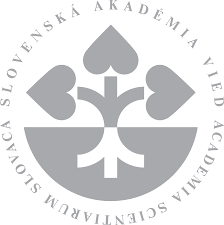


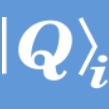
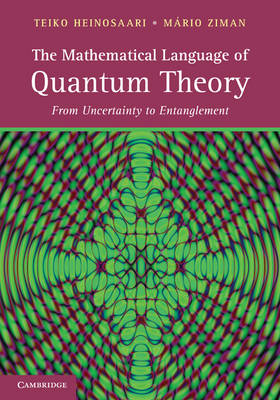
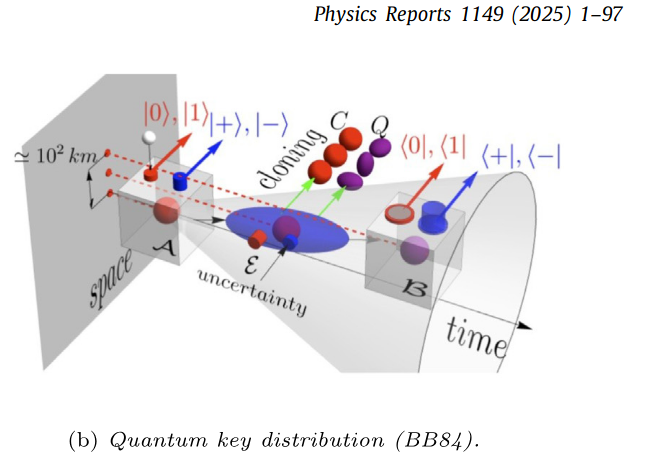 17.10.2025 Publication
17.10.2025 Publication
The future of secure communications: device independence in quantum key distribution
In the ever-evolving landscape of quantum cryptography, Device-independent Quantum Key Distribution (DI-QKD) stands out for its unique approach to ensuring security based not on the trustworthiness of the devices but on nonlocal correlations. Beginning with a contextual understanding of modern cryptographic security and the limitations of standard quantum key distribution methods, this review explores the pivotal role of nonclassicality and the challenges posed by various experimental loopholes for DI-QKD. Various protocols, security against individual, collective and coherent attacks, and the concept of self-testing are also examined, as well as the entropy accumulation theorem, and additional mathematical methods in formulating advanced security proofs. In addition, the burgeoning field of semi-device-independent models (measurement DI-QKD, Receiver DI-QKD, and One-sided DI-QKD) is also analyzed. The practical aspects are discussed through a detailed overview of experimental progress and the open challenges towards the commercial deployment in the future of secure communications.
by
Seyed Arash Ghoreishi, Giovanni Scala, Renato Renner, Letícia Lira Tacca, Jan Bouda, Stephen Patrick Walborn, Marcin Pawłowski
Physics Reports 1149, pp. 1-97 (2025) | +++ | QENTAPP (09103-03-V04-00777) | |||||
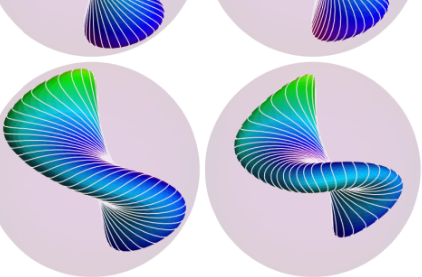 02.09.2025 Publication
02.09.2025 Publication
Coarse-grained dynamics in quantum many-body systems using the maximum entropy principle
Starting from a coarse-grained map of a quantum many-body system, we construct the inverse map that assigns a microscopic state to a coarse-grained state based on the maximum entropy principle. Assuming unitary evolution in the microscopic system, we examine the resulting dynamics in the coarse-grained system using the assignment map. We investigate both a two-qubit system, with swap and controlled-not gates, and 𝑛-qubit systems, configured either in an Ising spin chain or with all-to-all interactions. We demonstrate that these dynamics exhibit atypical quantum behavior, such as nonlinearity and non-Markovianity. Furthermore, we find that these dynamics depend on the initial coarse-grained state and establish conditions for general microscopic dynamics under which linearity is preserved. As the effective dynamics induced by our coarse-grained description of many-body quantum systems diverge from conventional quantum behavior, we anticipate that this approach could aid in describing the quantum-to-classical transition and provide deeper insights into the effects of coarse graining on quantum systems.
by
Adán Castillo, Carlos Pineda, Erick Sebastían Navarrete, David Davalos
Phys. Rev. A 112, 032204 (2025) | +++ | VEGA 2/0183/21 (DESCOM) | |||||
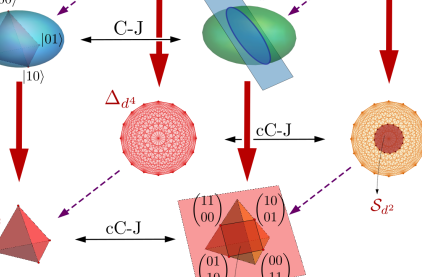 22.07.2025 Publication
22.07.2025 Publication
Certifying nonlocal properties of noisy quantum operations
Certifying quantum properties from the probability distributions they induce is an important task for several purposes. While this framework has been largely explored and used for quantum states, its extrapolation to the level of channels started recently in a variety of approaches. In particular, little is known about to what extent noise can spoil certification methods for channels. In this work we provide a unified methodology to certify nonlocal properties of quantum channels from the correlations obtained in prepare-and-measurement protocols: our approach gathers fully and semi-device-independent existing methods for this purpose, and extends them to new certification criteria. In addition, the effect of different models of dephasing noise is analysed. Some noise models are shown to generate nonlocality and entanglement in special cases. In the extreme case of complete dephasing, the measurement protocols discussed yield particularly simple tests to certify nonlocality, which can be obtained from known criteria by fixing the dephasing basis. These are based on the relations between bipartite quantum channels and their classical analogues: bipartite stochastic matrices defining conditional distributions.
by
Albert Rico, Moisés Bermejo-Morán, Fereshte Shahbeigi, Karol Życzkowski
Quantum 9, 1807 (2025) | +++ | VEGA 2/0183/21 (DESCOM), APVV-22-0570 (DeQHOST) | |||||
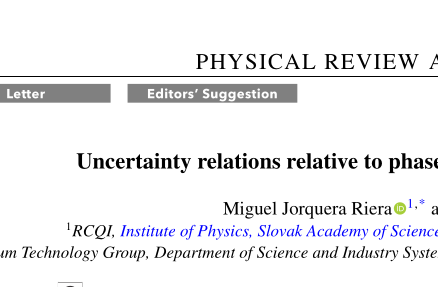 11.02.2025 Publication
11.02.2025 Publication
Uncertainty Relations Relative to Phase Space Quantum Reference Frames
We study Heisenberg's uncertainty relation relative to a quantum reference frame (QRF). We introduce the QRF as a covariant phase space observable, show that when described relative to it, position and momentum appear compatible, and derive novel, frame-relative uncertainty relations. This is achieved by constructing a joint observable for position and momentum, and calculating the variances of its margins. We then verify that in the classical limit of the QRF, the standard uncertainty relations are recovered, fortifying claims that standard quantum theory must be understood relative to an external, classical frame. These results may open up new research directions at the interface between QRFs and incompatibility.
by
Miguel Jorquera Riera, Leon Loveridge
Phys. Rev. A 111, L060201 (2025) | +++ | IMPULZ IM-2023-79 (OPQUT) | |||||
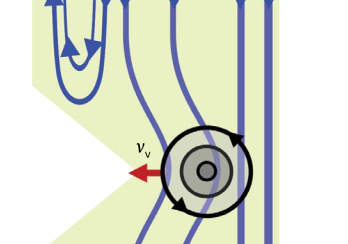 29.05.2025 Expert opinion
29.05.2025 Expert opinion
Low-loss electronics with superconducting diodes Expertise of our colleague Denis Kochan working in superconducting diodes got crowned by an invited News and Views article in the prestigous Nature Electronics, co-authored with Christoph Strunk (University of Regensburg), they highlighted recent breakthroughs toward low-loss, high-efficiency superconducting diodes—a key step for scalable quantum circuits and energy-efficient electronics. https://doi.org/10.1038/s41928-025-01388-0
Perex: Two papers report advances in high-efficiency superconducting diodes and multiple-diode rectifiers, which are required for the development of power management systems in scalable quantum circuits.
|
|||||
 24.04.2025 Open position
24.04.2025 Open position
skQCI postdoctoral positions in experimental quantum communication technologies Within the activities of Slovak euroQCI project (skQCI) we are seeking for R3 and R2 researchers experienced in quantum photonics experiment and/or theoretical analyses of quantum communication protocols. Interested candidates pls contact Djeylan Aktas. The positions will start at earliest from July 1st and ends at latest on 31/12/2026. Positions are extendable if agreed. The salaries ranges from 1800-3600 eur depending on the experience and expertize of the candidates. |
|||||
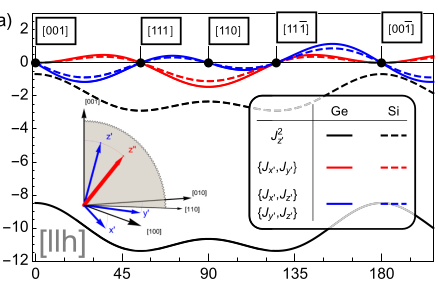 03.03.2025 Publication
03.03.2025 Publication
Quantification of the heavy-hole–light-hole mixing in two-dimensional hole gases
We theoretically investigate heavy-hole–light-hole mixing in two-dimensional hole gases (2DHG). We restrict our analysis to the zone center, appropriate for the low-density regime, which leads to a simple description, analytical results, and physical insights. We identify two different types of hole-Hamiltonian terms concerning mixing. The first type changes the direction of the pure spinors, without admixing light-hole components. It is efficient for Rabi driving the heavy-hole spin. The second type induces mixing and changes the eigenvalues of the g-tensor. We analyze several measures that characterize the mixing quantitatively in Ge, Si, and GaAs, namely the g-factor, the light-hole weight in the wave function, the off-diagonal matrix elements in the Hamiltonian, and the strength of the induced spin-orbit interaction. We identify the canonical coordinate frame associated with a generic spin-3/2 Hamiltonian with time-reversal symmetry (TRS). In this coordinate frame, the mixing is quantified by a single parameter, the mixing angle θ. We interpret it as the canonical (coordinate-frame and Hamiltonian-basis independent) measure of the heavy-hole–light-hole mixing. All the investigated mixing measures are simple functions of θ. As an illustration, we use our model to analyze heavy-hole spin qubit g-tensor, dephasing, relaxation, and Rabi frequencies, interpreting the arising effects as due to rotations of canonical frame and changes of the mixing angle θ.
by
Peter Stano, Daniel Loss
Phys. Rev. B 111, 115301 (2025) | +++ | QuantERA II 101017733 (GeMOS), VEGA 2/0156/22 (QuaSiModo) | |||||
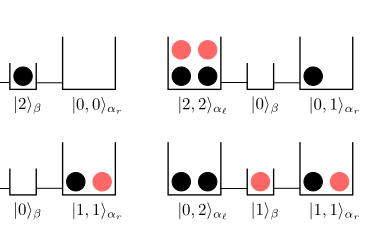 11.02.2025 Publication
11.02.2025 Publication
Quantum 2-SAT on Low Dimensional Systems Is QMA1-Complete: Direct Embeddings and Black-Box Simulation
Despite the fundamental role the Quantum Satisfiability (QSAT) problem has played in quantum complexity theory, a central question remains open: At which local dimension does the complexity of QSAT transition from "easy" to "hard"? Here, we study QSAT with each constraint acting on a d_A-dimensional and d_B-dimensional qudit pair, denoted (d_A×d_B)-QSAT. Our first main result shows that, surprisingly, QSAT on qubits can remain QMA_1-hard, in that (2×5)-QSAT is QMA_1-complete. (QMA_1 is a quantum analogue of MA with perfect completeness.) In contrast, (2×2)-QSAT (i.e. Quantum 2-SAT on qubits) is well-known to be poly-time solvable [Bravyi, 2006]. Our second main result proves that (3×d)-QSAT on the 1D line with d ∈ O(1) is also QMA_1-hard. Finally, we initiate the study of (2×d)-QSAT on the 1D line by giving a frustration-free 1D Hamiltonian with a unique, entangled ground state.
by
Dorian Rudolph, Sevag Gharibian, Daniel Nagaj
As implied by our title, our first result uses a direct embedding: We combine a novel clock construction with the 2D circuit-to-Hamiltonian construction of [Gosset and Nagaj, 2013]. Of note is a new simplified and analytic proof for the latter (as opposed to a partially numeric proof in [GN13]). This exploits Unitary Labelled Graphs [Bausch, Cubitt, Ozols, 2017] together with a new "Nullspace Connection Lemma", allowing us to break low energy analyses into small patches of projectors, and to improve the soundness analysis of [GN13] from Ω(1/T⁶) to Ω(1/T²), for T the number of gates. Our second result goes via black-box reduction: Given an arbitrary 1D Hamiltonian H on d'-dimensional qudits, we show how to embed it into an effective 1D (3×d)-QSAT instance, for d ∈ O(1). Our approach may be viewed as a weaker notion of "analog simulation" (à la [Bravyi, Hastings 2017], [Cubitt, Montanaro, Piddock 2018]). As far as we are aware, this gives the first "black-box simulation"-based QMA_1-hardness result. In 16th Innovations in Theoretical Computer Science Conference (ITCS 2025), Leibniz International Proceedings in Informatics (LIPIcs), Volume 325, pp. 85:1-85:24 (2025) | +++ | APVV-22-0570 (DeQHOST), VEGA 2/0183/21 (DESCOM) | |||||
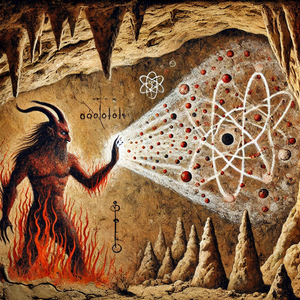 07.02.2025 Publication [author's view]
07.02.2025 Publication [author's view]
Universal validity of the second law of information thermodynamics
Adiabatic measurements, followed by feedback and erasure protocols, have often been considered as a model to embody Maxwell’s Demon paradox and to study the interplay between thermodynamics and information processing. Such studies have led to the conclusion, now widely accepted in the community, that Maxwell’s Demon and the second law of thermodynamics can peacefully coexist because any gain provided by the demon must be offset by the cost of performing the measurement and resetting the demon’s memory to its initial state. Statements of this kind are collectively referred to as second laws of information thermodynamics and have recently been extended to include quantum theoretical scenarios. However, previous studies in this direction have made several assumptions, particularly about the feedback process and the demon’s memory readout, and thus arrived at statements that are not universally applicable and whose range of validity is not clear. In this work, we fill this gap by precisely characterizing the full range of quantum feedback control and erasure protocols that are overall consistent with the second law of thermodynamics. This leads us to conclude that the second law of information thermodynamics is indeed universal: it must hold for any quantum feedback control and erasure protocol, regardless of the measurement process involved, as long as the protocol is overall compatible with thermodynamics. Our comprehensive analysis not only encompasses new scenarios but also retrieves previous ones, doing so with fewer assumptions. This simplification contributes to a clearer understanding of the theory.
by
Shintaro Minagawa, M. Hamed Mohammady, Kenta Sakai, Kohtaro Kato, Francesco Buscemi
npj Quantum Information 11, 18 (2025) | +++ | IMPULZ project No. IM-2023-79 (OPQUT), VEGA 2/0183/21 (DESCOM), APVV-22-0570 (DeQHOST) | |||||
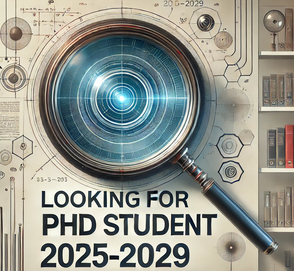 05.02.2025 Job opening
05.02.2025 Job opening
Become PhD student in quantum technologies and foundations Want to understand quantum foundations, run quantum computers, build quantum systems, use quantum networks, or encrypt quantum messages? Interested to join our research team for four years of you life? It is the time it takes to do the research and become expert (with PhD title) in quantum simulations, or optical quantum communication networks, or quantum security, or foundations of quantum phenomena. All of these fields are waiting for your contribution. Currently, we have open several PhD positions at our Institute. We are open for your email ideally before 10/03/2025. As for the first step please get in contact with a potential PhD advisor (send him your cv, motivation letter and contacts to potential references), discuss the subject and follow his/her instructions. Do not wait until the submission deadline and do this as soon as possible. If you are uncertain who to contact, just choose any of us. We are all happy to help. \ΞΞΞ |
|||||
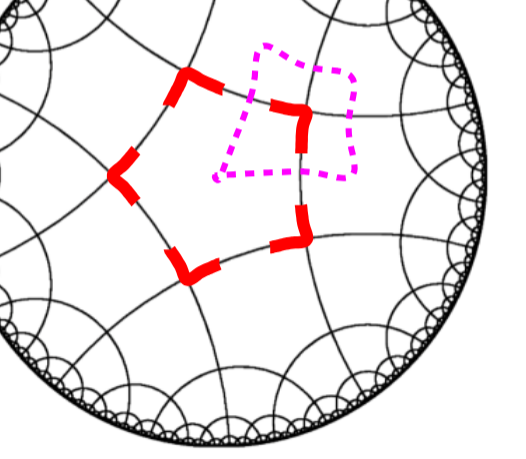 04.02.2025 Publication
04.02.2025 Publication
Vertex representation of hyperbolic tensor networks
We propose a vertex representation of the tensor network (TN) for classical spin systems on hyperbolic lattices. The tensors form a network of regular p-sided polygons (p > 4) with the coordination number 4. The response to multistate spin systems on the hyperbolic TN is analyzed for their entire parameter space. We show that entanglement entropy is sensitive to distinguish various hyperbolic geometries, whereas other thermodynamic quantities are not. We test the numerical accuracy of vertex TNs in the phase transitions of the first, second, and infinite order at the point of maximal entanglement entropy. The hyperbolic structure of TNs induces noncritical properties in the bulk, although boundary conditions significantly affect the total free energy in the thermodynamic limit. Thus a developed vertex-type TN can be used for the lowest-energy quantum states on the hyperbolic lattices.
by
Matej Mosko, Maria Polackova, Roman Krcmar, and Andrej Gendiar
Physical Review E 111, 024105 (2025) | +++ | PRESPEED (APVV-20-0150), QuaSiModo (VEGA 2/0156/22) | |||||
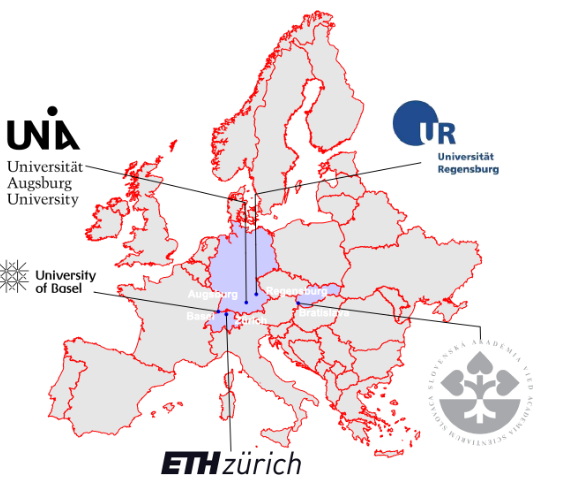 03.02.2025 Job opening
03.02.2025 Job opening
A post-doc in spin-based quantum computing theory ΞΞΞ A post-doc in spin-based quantum computing theory with semiconducting devices made from group-IV elements (Ge and Si). The position is partially funded by the EU QuantERA project GeMOS (see https://gemos.physics.sk). The postdoc is expected to work on some of the topics related to the GeMOS project, which include: 1. K-dot-p theory based models of spin qubits in lateral gated quantum dots. Investigations of principles of qubit operations, noise effects on qubit fidelities, and designs of improved and robust qubits. The topic will require knowledge of semiconductor physics, group representation theory, simple perturbation theory, and similar analytical tools. 2. Molecular dynamics of semiconductor-oxide interface. Numerical simulations of the oxide condensation process based on force-field data. The topic will require numerical simulations and collaboration with colleagues working with DFT tools. 3. Numerical 3D simulations of complex nano-devices using commercial or in-house software. The goal is to obtain realistic profiles of strain and electrostatic confinement within the active volume of the device and, based on them, interpret the qubit performance observed in experiments. The topic will require discussions with experimentalists and will include analysis of measured data. Apply here |
|||||
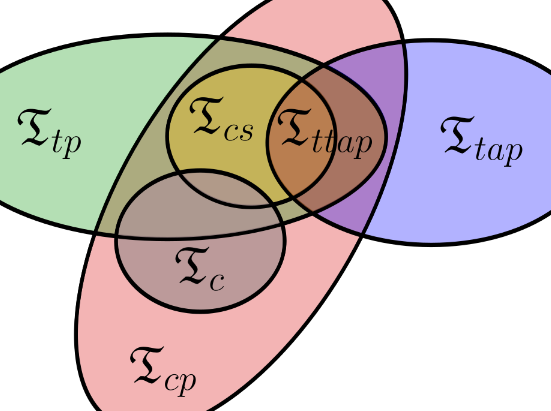 27.01.2025 Publication
27.01.2025 Publication
On the simulation of quantum multimeters
In the quest for robust and universal quantum devices, the notion of simulation plays a crucial role, both from a theoretical and from an applied perspective. In this work, we go beyond the simulation of quantum channels and quantum measurements, studying what it means to simulate a collection of measurements, which we call a multimeter. To this end, we first explicitly characterize the completely positive transformations between multimeters. However, not all of these transformations correspond to valid simulations, as otherwise we could create any resource from nothing. For example, the set of transformations includes maps that always prepare the same multimeter regardless of the input, which we call trash-and-prepare. From the perspective of an experimenter with a given multimeter as part of a complicated setup, having to discard the multimeter and using a different one instead is undesirable. We give a new definition of multimeter simulations as transformations that are triviality-preserving, i.e., when given a multimeter consisting of trivial measurements they can only produce another trivial multimeter. In the absence of a quantum ancilla, we then characterize the transformations that are triviality-preserving and the transformations that are trash-and-prepare. Finally, we use these characterizations to compare our new definition of multimeter simulation to three existing ones: classical simulations, compression of multimeters, and compatibility-preserving simulations.
by
Andreas Bluhm, Leevi Leppäjärvi, Ion Nechita
Quantum 9, 1608 (2025) | +++ | APVV22-0570 (DeQHOST), VEGA 2/0183/21 (DESCOM), APVV SK-FR-22-0018 |
|||||
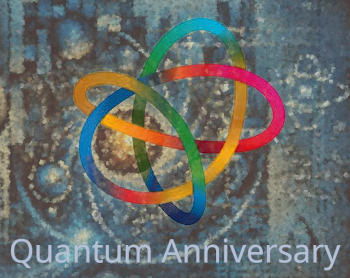 01.01.2025 Event
01.01.2025 Event
2025: Year of Quantum Unesco declared 2025 (among others) as International Year of Quantum Science and Technology. Why? The most probably answer is here [answer]. We are happy to contribute to celebration and spread the quantum truth among all open minds.
|



